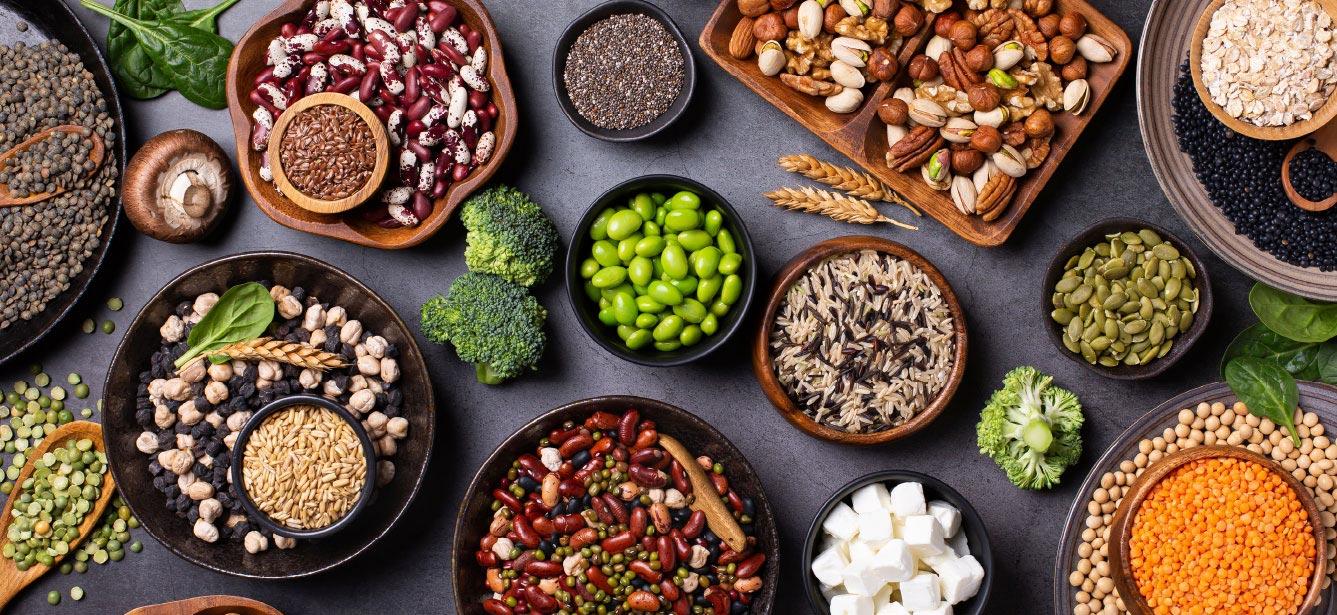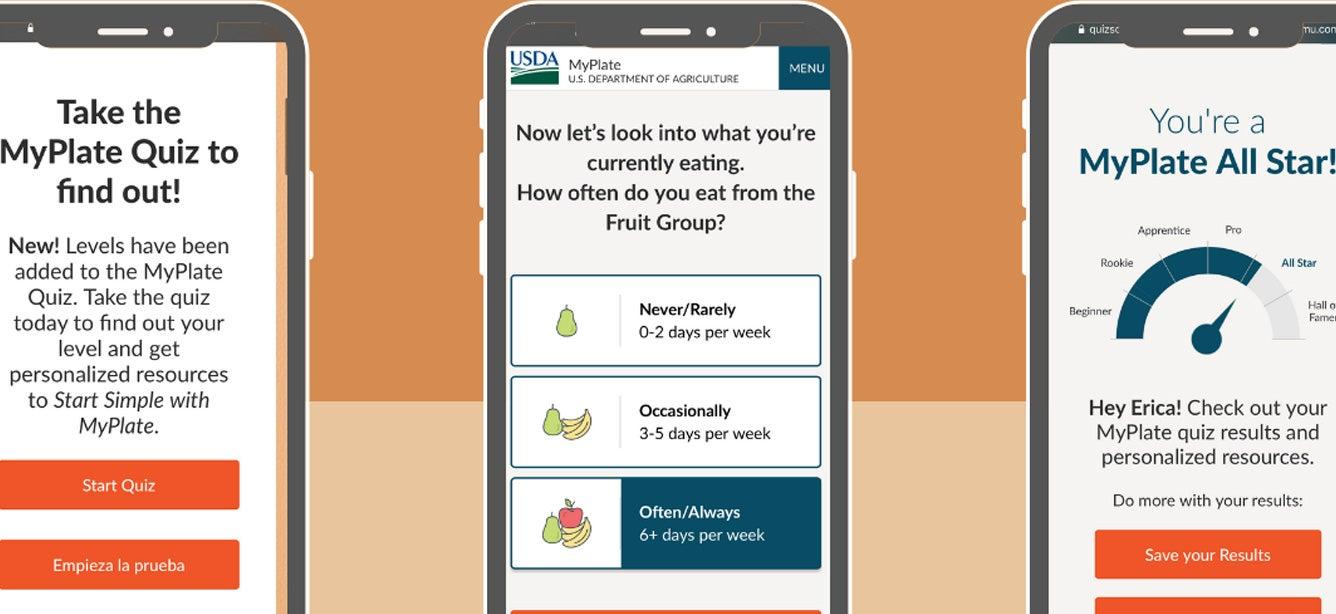Cooking With Plant-Based Protein: 5 Tasty Options to Try
8 min read

Related Topics
It's no secret that plant-based foods are good for us. Eating more vegetables, fruits, whole grains, and nuts supports a strong immune system, boosts bone health, reduces inflammation, and helps keep our digestive system working properly. It can also reduce our risk for illness and disease:
- A study found that three servings of non-starchy vegetables and two servings of fruit daily resulted in a 10% lower risk of death from cancer.1
- Whole, plant-based diets appear to be effective for weight loss.2
- A recent study of identical twins found that following a vegan diet improves heart health in just eight weeks.3
Many Americans are looking for ways to reduce their meat intake, whether it’s for environmental sustainability or simply to eat more healthfully. Beyond those benefits, choosing plant-based sources of protein can help us stretch our budgets further, too. A study by Oxford University found that following a vegan, vegetarian, or flexitarian diet can reduce a person's grocery bill by up to a third.4
Can you get enough protein from plant foods?
If meat has always been a staple of your meals, trading in your T-bone for tofu might seem drastic. You may be wondering, How do you eat plant-based and get enough protein?
The good news is there's a wide range of plant foods that can help you meet your daily protein needs. And it's surprisingly simple to make healthier swaps for meat in recipes. The first step is knowing how to prepare plant-based proteins and when to use them. Here are some tips below.
5 plant-based proteins to inspire healthier meals
1. Pulses
What are pulses? They're the edible seeds of legumes and include lentils, beans, chickpeas, and dried peas (black-eyed peas, pigeon peas, split peas). This category does not include green beans. Pulses are loaded with nutrients like fiber, potassium, and iron—and can be easy to cook with a little practice. A half-cup of cooked pulses has about 6 grams of protein (more than a large egg).
Beans, peas, and lentils are generally available in dry, frozen, or canned form, and the cooked versions are interchangeable for most recipes. Canned varieties have been cooked and/or soaked ahead of time and packed in liquid. With dry beans, peas, or lentils, you will need to soak them for a few hours (or overnight) in water and boil them according to package directions before using.
Here are some ideas for cooking with pulses:
- Swap cooked lentils for meat in soups, stews, chili, stuffed peppers, and tacos.
- Use plain or flavored hummus (typically made from cooked chickpeas) as your sandwich protein instead of deli meat.
- Puree any type of beans or lentils with herbs, spices, and lemon juice to make a variety of mouth-watering dips.
- Blend a quarter-cup of cooked chickpeas (also known as garbanzo beans) into a smoothie for added plant-based protein.
- Make pasta sauces thicker and heartier with cooked lentils.
- Roast any type of cooked bean (canned and well-drained, or frozen and thawed) until they're crispy. Season and eat them as a crunchy snack, or sprinkle over a salad.
2. Legumes
All pulses fall into the category of legumes, but not all legumes are pulses (still with us)? The legume family includes beans, peas, and lentils—but also edamame (soybeans) and peanuts.
Peanuts contain 30 essential vitamins and nutrients, including protein. One-fourth of a cup of roasted peanuts and two tablespoons of peanut butter each boast eight grams of protein. Bump up your protein intake by adding peanuts to a salad, Asian noodle bowl, or stir-fry. Stir peanut butter into your smoothies and oatmeal—or spread it on your favorite bread with low-sugar fruit preserves. Peanuts and nut butters are high in calories, so watch your portions.
Edamame, or fresh soybeans, can be used to dress up salads, risotto, or pasta dishes. Although they come in a pod, you don’t eat that part of the plant. Use your teeth to pop the beans out of their pods or purchase frozen edamame beans that are already shelled. Edamame are also scrumptious roasted to a crispy texture and seasoned with spices. Another idea: puree this plant-based protein to make pesto and flavorful dips. A half-cup of shelled and cooked edamame contains a respectable 9 grams of protein.
3. Tofu
Tofu is another name for bean curd made with cooked, crushed soybeans and water. The consistency of tofu ranges from firm to custard-like. With a mighty 21.8g of protein per half-cup serving, tofu is a protein powerhouse that’s low in fat, carbohydrates, and sodium. This, along with its ability to readily absorb the flavors it's cooked with, makes it a preferred meat substitute. Pro tip: Press your tofu before cooking to squeeze out extra water. This helps it better soak up marinades and seasonings.
Try these approaches for cooking with tofu as your plant-based protein:
- If you’re looking for ways to stretch small amounts of ground meat, use tofu as a meat extender in your favorite recipe. You can mix it into chili, burgers, casseroles, and lasagna with little noticeable texture change.
- Swap firm tofu pieces for beef or chicken in stir-fry recipes.
- Use silken (custard-like) tofu to thicken sauces, soups, stews, smoothies, dressings, and desserts.
- Scramble soft or medium-firm tofu instead of eggs for breakfast.
- Marinade and grill a firm tofu patty instead of using ground beef.
4. Quinoa
Technically, quinoa is a seed, but it’s classified as a whole grain. One cup of cooked quinoa packs about eight grams of protein and five grams of fiber as well as a host of other important nutrients.
Not only is quinoa hearty; its mild, nutty flavor makes this plant-based protein extremely versatile. It’s an excellent meat alternative that works well for many dishes. Quinoa also gluten-free, making it ideal for people with celiac disease or gluten sensitivity.
Here are some ideas for cooking with quinoa:
- Replace white rice with quinoa in recipes, since it readily absorbs the flavors of seasonings, broths, and sauces.
- Quinoa's grainy texture makes it comparable to ground beef. Use it as a meat extender and blend it with small amounts of meat. You can also swap quinoa completely for meat in tacos or use it to make vegetarian or vegan burgers.
- Make soups, stews, and salads more satisfying by adding one-half to one cup of cooked quinoa.
- Swap quinoa for pasta in pasta salad recipes.
- Cook quinoa in water or milk and then top it with cinnamon, fresh fruit, or a sprinkle of nuts for a nourishing breakfast.
5. Tempeh
Think of tempeh (or tempe) as tofu's nuttier-tasting relative. This traditional Indonesian food is made of slightly fermented soybeans that are combined with other ingredients and pressed into a firm, dense "cake." Tempeh can be sliced, chopped, cubed, or even crumbled. Like tofu, it’s a protein superstar, with 31 grams of protein in just one cup. It’s also great at taking on the flavors you cook it with.
Here are a few ways to use tempeh as a plant-based protein:
- Grilled tempeh has an appealing smoky flavor and delectably crispy edges. Add slices of it to a sandwich or wrap—or cube the tempeh and use it in place of meat on a skewer with fresh veggies. You can also use grilled tempeh to create meatless BLTs.
- Bake chunks of tempeh until crispy and use them as croutons for salad and soup. If you own an air fryer (a small countertop convection oven), you can use that as well to get a pleasantly crispy texture.
- Sautee quarter-inch slices of tempeh in a pan with your go-to seasonings. You can even coat it with breadcrumbs and top it with marinara sauce and cheese to make a plant-based version of chicken Parmesan.
- Crumble tempeh into chili or stews instead of ground beef. It's also a tasty way to give tacos a protein boost.
SNAP can help you stick to a healthy, plant-based diet
If your doctor or dietitian has recommended a heart-healthy diet that includes plant-based proteins, you might wonder if you can afford it. Older adults living on a fixed or low income often struggle to fill their plates with fresh, whole foods, which often cost more.
The good news is there are ways to save money while still enjoying balanced, nutritious meals. One of these is to create a grocery budget—we show you how here. Another way to stretch your money further is by seeing if you qualify for the Supplemental Food Nutrition Assistance Program (SNAP).
“Literally millions of older adults qualify for SNAP and other assistance programs and don’t apply,” said Jen Teague, NCOA Director for Health Coverage and Benefits. “And they’re potentially leaving thousands of dollars on the table that could go back into their budget.”
It's worth learning more about SNAP: The average benefit for a one-person older adult household is $188 per month, which translates to $2,256 per year.5 To see if you may qualifyuse NCOA's onilne tool dcalled BenefitsCheckUp. Visit the website and start by entering your ZIP code. Learn about SNAP and other money-saving benefits programs that can help you live better and worry less.
Sources
1. Dong D. Wang, et al. Fruit and Vegetable Intake and Mortality. Circulation. March 1, 2021. Found on the internet at https://www.ahajournals.org/doi/10.1161/CIRCULATIONAHA.120.048996
2. Michael Grieger. A Whole Food Plant-Based Diet is Effective for Weight Loss: The Evidence. American Journal of Lifestyle Medicine. September/October 2020. Found on the internet at https://www.ncbi.nlm.nih.gov/pmc/articles/PMC7444011/
3. Matthew J. Landry, et. al., Cardiometabolic Effects of Omnivorous vs Vegan Diets in Identical Twins. JAMA Network Open. November 30, 2023. Found on the internet at https://jamanetwork.com/journals/jamanetworkopen/fullarticle/2812392
4. University of Oxford. Sustainable eating is cheaper and healthier - Oxford study. November 11, 2021. Found on the internet at https://www.ox.ac.uk/news/2021-11-11-sustainable-eating-cheaper-and-healthier-oxford-study
5. USDA. Fiscal Year 2025 Cost_of-Living Adjustments. Aug. 2, 2024. Found on the internet at https://fns-prod.azureedge.us/sites/default/files/resource-files/snap-cola-fy25.pdf




